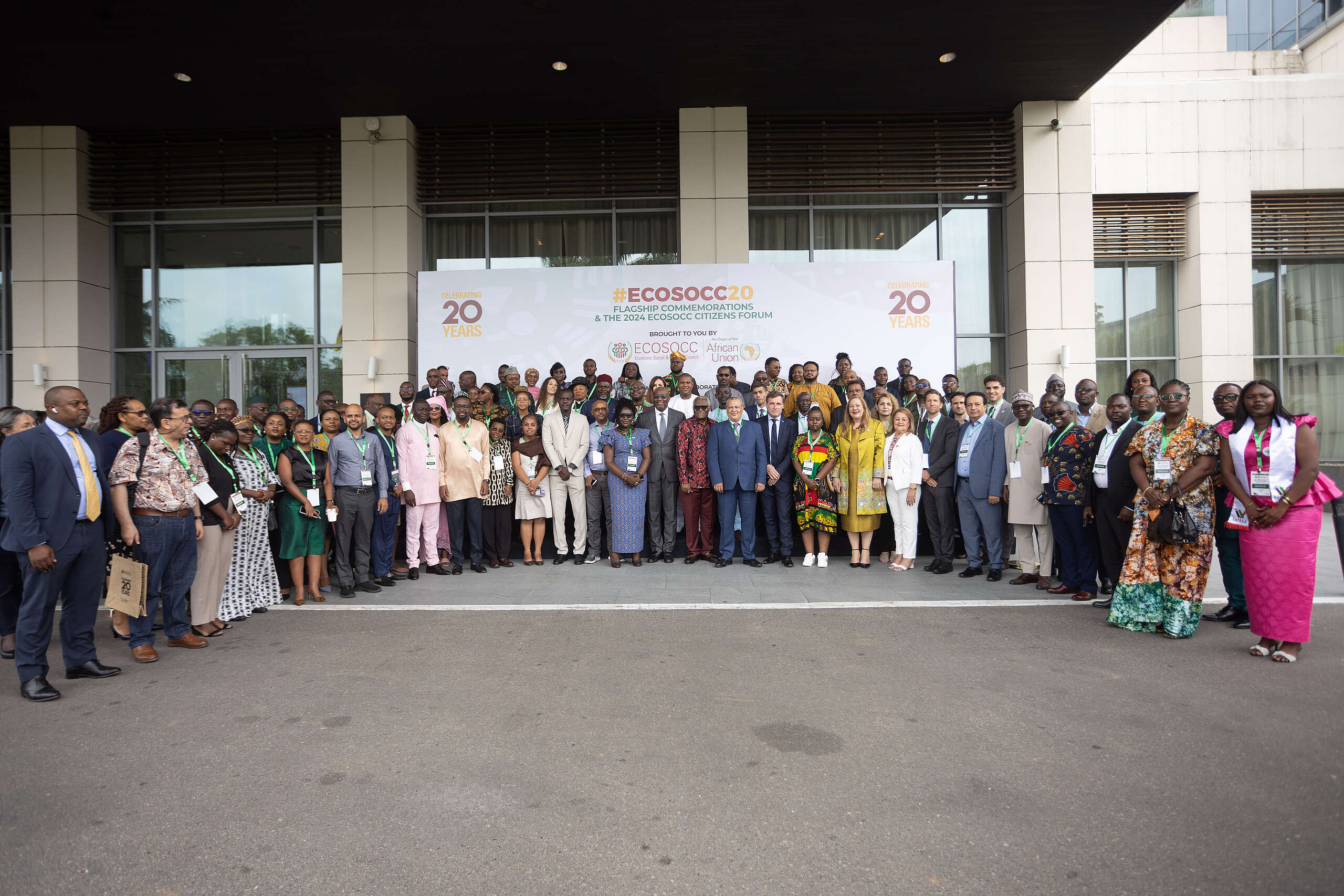Decarbonisation explained: How will it benefit Africa?
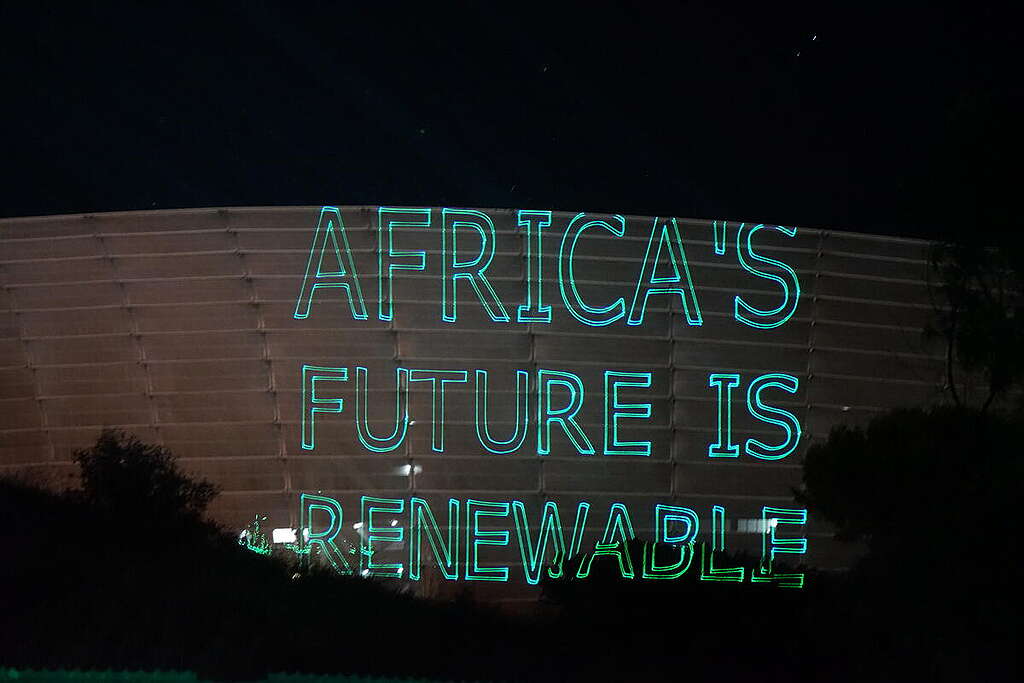
The rapid rise in greenhouse gas (GHG) emissions is responsible for the worsening climate crisis, and Africa’s contribution cannot be ignored. In recent years, the continent has experienced a spike in fossil fuel burning and illegal logging, leading to an increase in global emissions.
- Burning fossil fuels pollutes air, water, and land. Consequently, communities across the continent are left to grapple with the negative impacts, including food insecurity, and respiratory and waterborne illnesses. The continued investment in fossil fuel exploration also intensifies climate change and exemplifies the indifference of the fossil fuel industry to the climate emergency.
- Illegal logging, most prevalent in the Congo Basin, also accelerates climate change in Africa by depleting natural carbon sinks.
Consequently, the implications of high emissions reverberate across Africa. An example is Cyclone Freddy, which wreaked havoc in Southern Africa between February 5 and March 14, killing hundreds and displacing hundreds of thousands. The recent drought in the Horn of Africa and floods across West and Central Africa further depict the devastating impacts of fossil fuel-driven climate change.
Current adaptation and resilience initiatives, like creating flood barriers and farming drought-resistant crops, build a false sense of security. The grim reality is that these strategies are a short-term solution and do not directly address the climate emergency, hence the urgent need to decarbonise.
The United Nations Secretary General’s – Antonio Guterres – speech during the 2023 Petersberg Climate Dialogue confirmed as much as he called on countries to cooperate and move beyond geopolitical divisions to achieve decarbonisation.
But what is decarbonisation, and how will Africa gain from it?
Decarbonisation explained
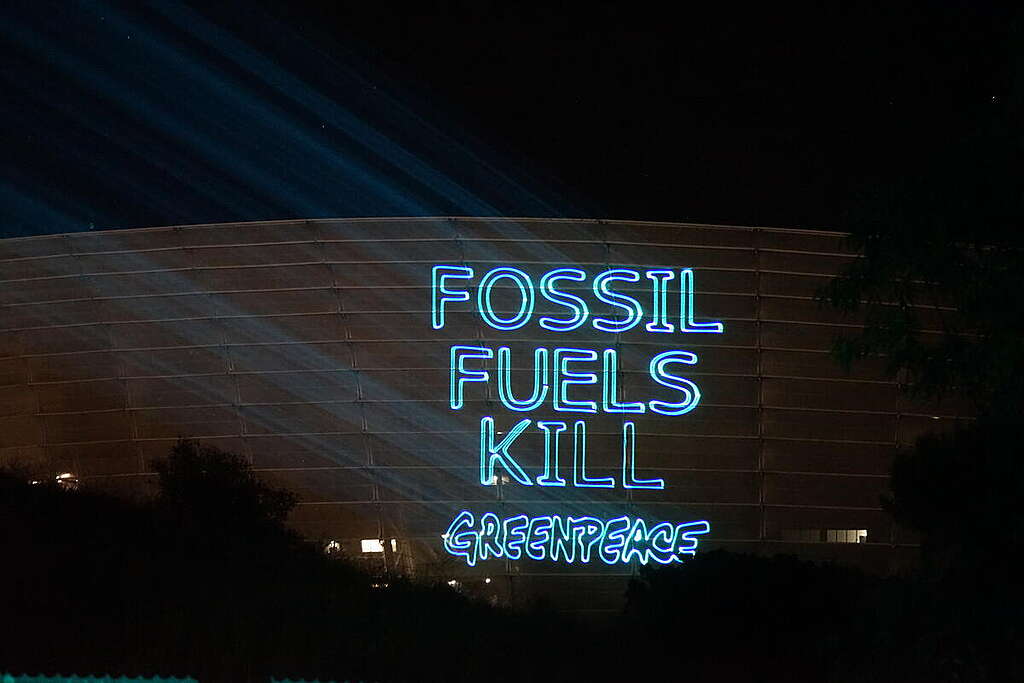
Put simply, decarbonisation means cutting back carbon emissions. It entails transitioning into economic models that minimise or compensate for the carbon dioxide (CO2) emitted into the atmosphere alongside other greenhouse gases like nitrous oxide (N2O) and methane (CH4).
Decarbonisation is crucial to meeting the Paris Agreement goal of limiting global warming to 1.50C and maintaining global temperatures well below 20C above pre-industrial levels.
To minimise carbon emissions effectively, it is important to know their source. Energy use is responsible for the highest amount of GHG emissions. The remaining emissions are shared between land use, agriculture, industry, and waste.
Despite Africa’s low carbon footprint, the continent’s emissions have been on the rise over the years. For example, between 2000 and 2018, emissions from land use rose by 20%. In 2018, the agricultural sector emitted 2.2 Gt CO2eq, which accounted for 24% of global emissions, an increase from the 18% emitted in 2000.
To keep the emissions from rising further, Africa needs to take the initiative and begin decarbonising as early as now. Fortunately, the continent’s low carbon footprint, natural treasure endowment, and substantial renewable energy potential provide a clear pathway to execute the decarbonisation agenda.
Africa’s decarbonisation capacity
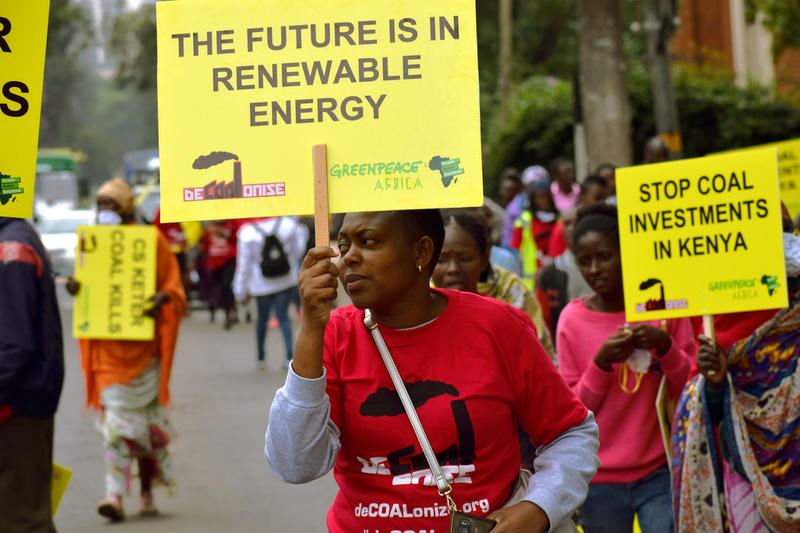
Phasing out fossil fuels is a key aspect of decarbonisation that requires global economies to invest heavily in green technologies. The mineral resources needed to manufacture these technologies include cobalt, copper, lithium, manganese, iron, iridium, zinc, and nickel.
For instance, minerals like manganese, cobalt, and lithium are employed in steel production, making rechargeable batteries, and manufacturing lithium-ion batteries respectively.
This puts Africa on the frontline of decarbonisation as it possesses plenty of these treasures. For instance, the Democratic Republic of Congo holds close to half of the world’s cobalt reserves. Similarly, Zimbabwe is among the top five global lithium suppliers, while Gabon and South Africa account for 40% of the world’s manganese reserves.
Presently, resource extraction in Africa is marred by poverty, violence, state corruption, and environmental degradation. This is often the outcome because these natural treasures are controlled by foreign powers rather than African states. In the end, only these advanced economies and the continent’s elites benefit.
Considering that these resources are critical to a clean energy transition, Africa cannot afford to relinquish control over these natural treasures or auction them to the Global North. It is also worth noting that a green transition is only possible through the sustainable harnessing of precious resources to avoid overconsumption.
Here is a breakdown of some of Africa’s natural assets that are essential to decarbonisation.
Cobalt reserves in the DRC
The Democratic Republic of the Congo, one of the largest countries in Africa, is endowed with numerous mineral resources, such as cobalt, copper, and lithium. All these minerals are essential in generating green energy, facilitating the continent’s transition to a low-carbon future.
The country’s cobalt endowment is especially notable as approximately half of the world’s 8.3 million metric tonnes of the mineral are found in the DRC. This makes her the largest cobalt supplier globally.
Cobalt’s role in decarbonisation cannot be overstated. The mineral is used to manufacture lithium-ion batteries, which are key to phasing out fossil fuels.
Lithium-ion batteries are necessary for operating electrical energy storage systems and electric cars. The electrical energy storage systems ensure that electricity is stored safely and in large quantities to facilitate a stable and constant supply of power.
These technologies are a welcome change, considering that the transport and utility industries are major GHG emitters.
Manganese reserves in South Africa and Gabon
Manganese, another essential element in Africa’s decarbonisation, is found in plenty in South Africa and Gabon. South Africa’s manganese reserves are majorly found in the Northern Cape province in one of the largest manganese deposits in the world – the Kalahari Manganese Field (KMF). The 15 km wide and 35 km long deposit comprises roughly 77% of global manganese resources.
Gabon also holds considerable manganese reserves, primarily in the Belinga mountains in the country’s northeastern region, and in Moanda and Francevile. Combined, these reserves are the second largest worldwide and rank the Central African nation as the third largest manganese supplier globally.
Manganese’s role in stainless steel production aids the green energy transition, as steel is a key component in the construction of renewable infrastructure, such as solar and wind farms.
Like cobalt, manganese is also used in the production of lithium-ion batteries and is thus needed to power electric vehicles, electricity storage systems, and household appliances. This exemplifies manganese’s role in sustaining green technology activities and emphasises South Africa and Gabon as leaders in Africa’s decarbonisation initiatives.
Lithium reserves in Zimbabwe
Lithium is another highly sought-after mineral as countries race to cut down their GHG emissions, and Zimbabwe possesses it in large quantities. In fact, the nation is ranked as the largest lithium producer in Africa and the fifth largest producer globally. The country’s largest mine – the Bikita mine – is located in the southern region. Other lithium mines in Zimbabwe are found in Kamativi and Goromonzi areas.
The increasing demand for lithium in the global arena has already attracted major investor attention and is expected to increase Zimbabwe’s export capacity even more. This mineral resource’s role in the manufacture of battery products also establishes Zimbabwe as a worthy leader in Africa’s decarbonisation agenda.
But, Africa’s potential as a leader in decarbonisation is not limited to mineral extraction alone. Other key resources in this agenda include forest resources and renewable energy sources like solar, wind, and hydropower.
Expansive forest resources
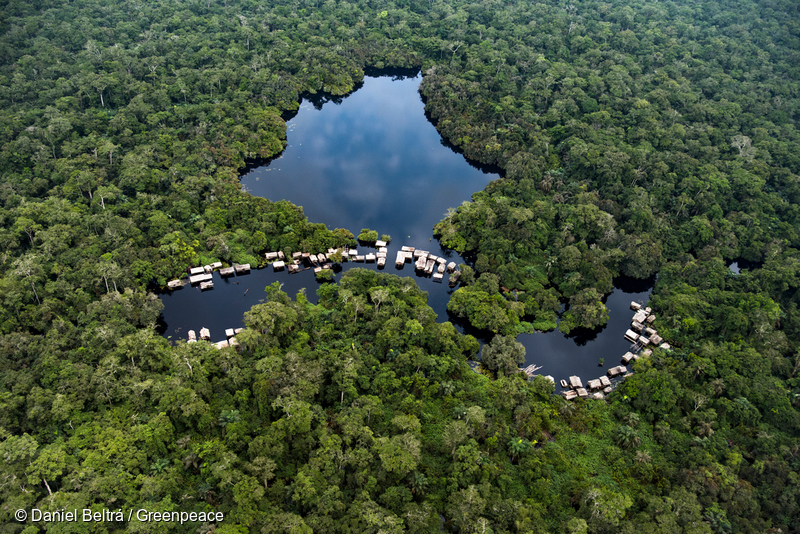
Forests facilitate decarbonisation through carbon storage. Trees, organic matter, and soil can store large amounts of atmospheric carbon emissions. This is especially the case with natural forests as they are more mature and have had a lengthier growth period resulting in the accumulation of vast biomass resources. Older and regenerating forests are estimated to absorb up to 2 GtC (gigatonnes of carbon) per annum.
The Congo Basin rainforest, the largest forest area in Africa and the second-largest tropical rainforest worldwide, plays a key role in Africa’s net zero transition. Its tropical peatlands are believed to store approximately thirty billion tons of carbon, reaffirming the continent’s ability to decarbonise successfully.
Renewable energy sources
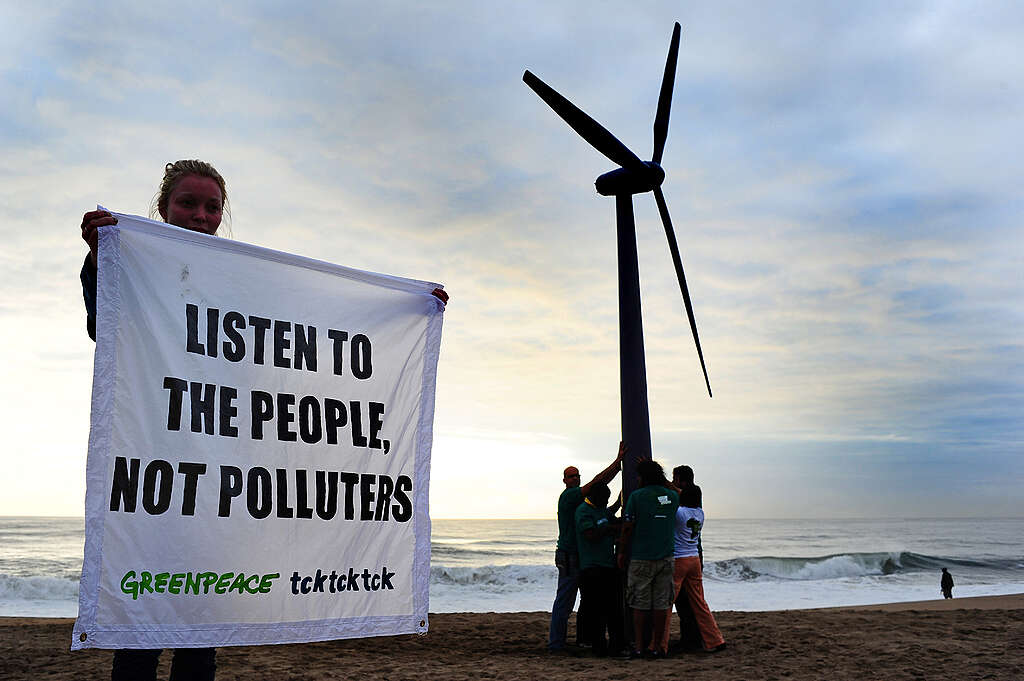
- Solar energy prospects in Africa
Investing in solar energy is an exceptional way to decarbonise the continent because solar power has zero emissions. Africa’s solar energy generation potential is enormous. The International Energy Agency (EIA) reports that Africa’s solar resources are about 60% of the global supply. However, only a portion of these – an estimated 1% – has been explored.
Take South Africa, for instance. Most regions in the country experience over 2500 hours of sunshine annually. The average daily solar radiation levels vary between 4.5 and 6.5 kWh/m2. However, the South African government’s reliance on coal continues to date and has led to an increase in GHG emissions over the centuries, increasing the country’s vulnerability to climate change.
To minimise this susceptibility, South Africa needs to ditch coal and adopt renewable energy resources like solar. This will go a long way in decarbonising the nation and Africa as a whole.
The Sahara desert is yet another hotspot for high solar radiation levels. The countries it passes through have a high potential to generate enough solar energy to turn Africa into a solar superpower.
An example is Morocco, home to the largest CSP (concentrated solar power) plant worldwide, known as the Noor Complex Solar Power Plant. The plant has a massive megawatt capacity that enables it to serve approximately two million people with solar power. Additionally, this infrastructure signifies the beginning of Morocco’s decarbonisation, as it limits GHG emissions to 1 million metric tons of GHGs annually.
Thanks to the Sahara desert, Egypt also has an extensive desert area, establishing it as a solar energy hub. The country’s Benban Solar Park is especially telling of its potential to help Africa decarbonise. The power complex is the largest in Egypt and one of the biggest stations worldwide. It generates power for over one million households and limits about two million tonnes of carbon emissions annually. The solar park has enabled Egypt to move forward with its renewable energy transition and created tens of thousands of jobs for Egyptians, promoting social development.
- Wind power potential in Africa.
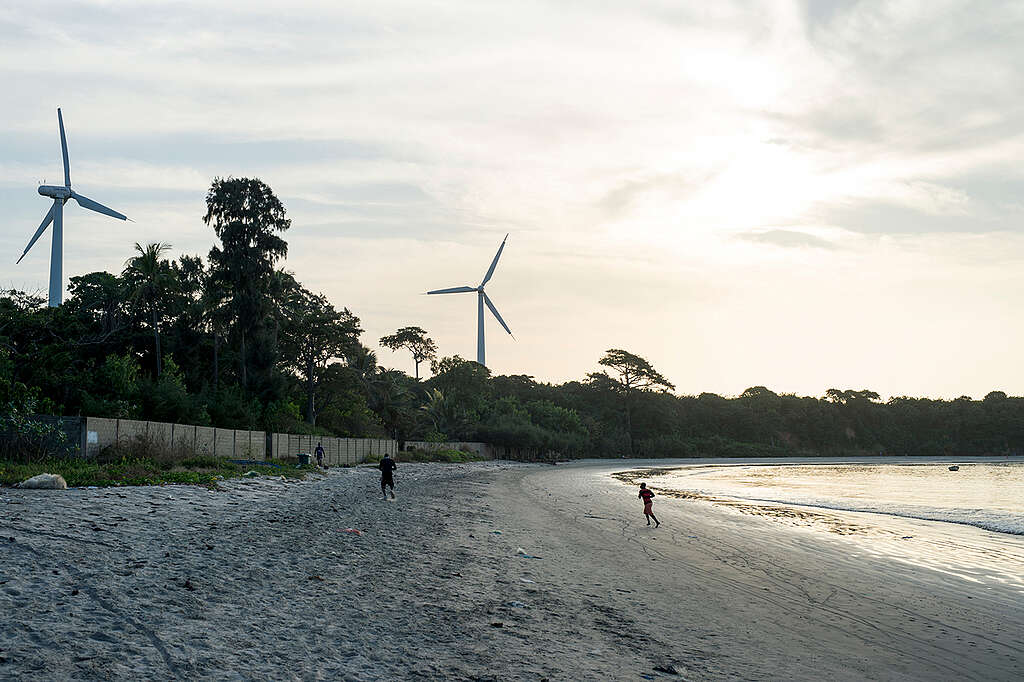
Image ID: GP0STPOS8
Africa’s extensive coastlines, open spaces, and favourable wind conditions are a testament to its considerable wind power capacity. Kenya, South Africa, Egypt, Senegal, and Ethiopia are just a few of the countries in Africa with a high wind energy potential, which, if keenly explored, could drive the continent’s decarbonisation efforts.
For instance, Lake Turkana in Kenya boasts exceptional wind resources, including one of Africa’s largest wind farms – the Lake Turkana Wind Power Project. South Africa’s coastal region is also rich in wind energy resources. The country has a few active wind farms, including Sere Wind Farm and Oyster Bay Wind Farm, indicating its potential to lead Africa’s decarbonisation.
Other large-scale wind farms in Africa that showcase the continent’s decarbonisation capacity include Tarfaya Wind Farm in Morocco, Gulf of Suez II Wind Farm in Egypt, Taiba N’Diaye Wind Farm in Senegal, and Ashegoda Wind Farm in Ethiopia.
- Hydropower energy potential in Africa
Roughly 70% of the renewable energy generated in Africa today is tapped from hydropower energy resources. This is thanks to the continent’s geographic aspects and expansive river systems that support hydropower generation.
Some countries in Africa with significant hydropower potential include the DRC, Mozambique, South Africa, Zambia, and Kenya.
The DRC’s Congo River is key to hydropower development in the country. Its Inga Falls is the site for a large-scale hydropower project dubbed the Grand Inga Dam Project, which could be the world’s largest hydropower station if executed as planned.
The Zambezi River also supports hydropower generation in Mozambique, South Africa, and Zambia. In Mozambique, the river hosts the Cahora Bassa Dam, a hydropower facility designed specifically for exporting energy. This plant supplies hydropower across Mozambique and uses a 1400 km long power line to deliver energy to South Africa.
The Kariba Dam, also situated in the Zambezi River, supplies both Zambia and Zimbabwe with electricity and has been influential in their ongoing transition to clean, renewable energy, which is vital to decarbonisation.
Kenya has not been left behind either. The country continues to make strides in hydropower energy investment and currently boasts a few active large-scale hydropower stations, including the Turkwel and the Seven Forks Hydroelectric Stations.
Overall, the high hydropower capacity in these countries is evidence of Africa’s potential to lead global decarbonisation efforts.
Nonetheless, the need for smart hydropower projects cannot be underrated. While this source is considered emissions-free, large reservoir dams constructed to facilitate large-scale hydropower energy generation have been linked to greenhouse gas emissions. This has especially been the case in tropical regions, with the emissions resulting from the anaerobic decomposition of organic matter in the flooded area. Contrarily, dam construction is not necessary for small hydro projects, making them a more efficient and viable option.
However, the above challenges are mostly ecosystem specific, implying that in some instances, large hydro projects may lead to better outcomes than smaller ones. Therefore, while the adoption of small and ‘smart’ hydro projects is recommended to lead Africa’s decarbonisation efforts, it is also imperative to consider each project’s ecological merits including impact on biodiversity and the overall carbon balance to ascertain its ‘smartness’.
How will Africa benefit from decarbonisation?
Africa stands to gain immensely from decarbonisation through improved public health, fulfilled energy demands, sustainable economic growth and development, and climate change mitigation.
We want:
— Greenpeace Africa (@Greenpeaceafric) May 29, 2023
1. Less pollution and polluting corporations
2. More clean and sustainable energy
Make it happen!
Add your voice 👉 https://t.co/NyD0z1eP1u pic.twitter.com/vMJlD97kqS
- Improved Public Health
Decarbonisation will positively impact the health of the greater population. Currently, fossil fuel-driven economies are responsible for the increasing water and air pollution levels and the subsequent health complications.
In South Africa, for instance, coal mine workers and residents living near mines or coal-fueled power stations are exposed to numerous respiratory health risks. Water pollution also increases the risks of similar conditions and others, like skin disease and cancer.
The good news is that decarbonising the continent will require nations to eliminate fossil fuels. Consequently, this will alleviate the health burden linked to pollution, thus improving the health of populations across Africa.
- Fulfilled Energy Demands
Part of decarbonising the continent involves exploiting renewable energy sources like hydro, wind, and solar power and leveraging other resources to aid the transition into green energy. Africa already possesses the necessary resources, including mineral resources like cobalt, manganese, and lithium, which are critical in the construction of renewable energy infrastructure.
These vast resources are key to diversifying energy sources, thus increasing energy security and enhancing access. Increased access to clean, reliable electricity fulfils energy demands in previously underserved areas and promotes social development by availing employment opportunities and enhancing education.
- Sustainable economic growth and development
Africa’s decarbonisation is an opportunity for the continent to unlock economic success. As earlier mentioned, carbon emissions can cause health burdens for workers in fossil fuel-driven industries or residents near areas where these emissions are highest.
The best way to alleviate this burden is to transition into low-carbon economies. Consequently, this will enable nations to reduce their healthcare costs and redirect the funds to other sectors, promoting economic growth and development. Reduced health risks will also increase productivity across various sectors, enhancing efficiency and facilitating further economic development.
Another economic opportunity for growth and development is job creation. Successful decarbonisation requires combined effort in constructing, operating, and maintaining green infrastructure. To meet this demand, numerous roles will need to be filled, thus creating massive job opportunities. This will improve the quality of life for many and spark economic growth.
Climate change, which is influenced by GHG emissions, disrupts the food system leading to food insecurity. But through decarbonisation, adverse climate change impacts can be mitigated, paving the way for sustainable agricultural practices that boost productivity and promote food security. The economic benefits of these outcomes are also significant to the continent.
On the whole, decarbonisation promotes economic growth that meets the current generation’s needs without compromising the future generation’s capacity to do the same, equaling sustainable economic growth.
- Climate change mitigation
Africa’s low emissions have not exempted it from the adverse impacts of climate change. For example, the recent drought in the Horn of Africa left approximately 22 million people in the region without food. An estimated 5.1 million children also suffered acute malnutrition as a result. Other adverse effects like deadly cyclones, extreme wildfires, and floods have plagued the continent for years, which is why decarbonisation needs to happen urgently.
Decarbonising Africa will require efforts to be made towards mitigating climate change and building climate resilience. Mitigating climate change reduces the occurrence of extreme climate events like the ones mentioned above while building climate resilience reduces the continent’s vulnerability to such occurrences. These efforts will go a long way in protecting ecosystems such as wildlife and their habitats, forests, and oceans and stabilising the agricultural sector and economies of the various countries.
Limitations to Africa’s decarbonisation agenda and how to overcome them
Although Africa is well endowed with the natural treasures needed to decarbonise successfully, several obstacles hinder that from happening.
- Africa lacks adequate infrastructure to achieve decarbonisation.
Adequate grid infrastructure is needed to facilitate the integration of renewable energy resources into the current energy mix. Unfortunately, African states are underequipped with this infrastructure.
In addition, the current capacity can only support small-scale renewable source deployment. In some nations, the existing infrastructure is too outdated to allow the integration of renewable energy into the grid, while in others, it simply does not exist.
This explains why much of the green energy resources in Africa are untapped. The cost of constructing additional infrastructure is also quite high, meaning it may take a while before Africa accomplishes decarbonisation.
Solution
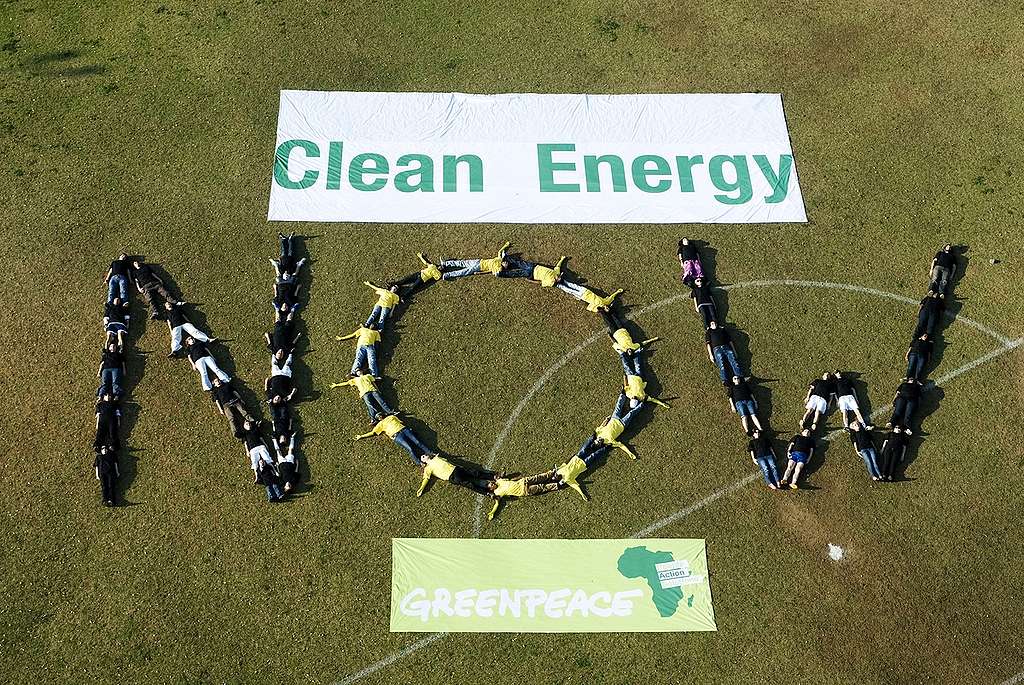
To overcome this challenge, governments across the African continent should partner with private investors, corporations, or communities where necessary. For example, governments are responsible for procuring the necessary infrastructure for their respective countries. However, the high debt burden in African countries may pose obstacles, which is why investor aid is necessary to minimise financial constraints.
Additionally, government assistance in the form of nonrestrictive policies and regulations, subsidies, and financial incentives may be beneficial in attracting private investors and corporations for green energy investment purposes.
- The initial cost of transitioning into green economies is too high.
As mentioned above, Africa does not have the necessary infrastructure to allow the integration of renewable energy projects yet. Building new systems from the ground up is very costly due to equipment purchases, installation expenses, and grid connection costs.
Considering that Africa is also home to more than 70% of the world’s least developed nations, the continent is not financially capable of meeting the upfront costs, delaying decarbonisation projects longer than necessary.
Limited access to financial assistance also impedes decarbonisation. The amount of money that these countries would need to borrow is so high and is accompanied by collateral requirements, limited repayment periods, and high-interest rates. These countries already possess a high debt burden, so going down this road would only drive them deeper into debt, further undermining their economic performance.
The other alternative to acquiring financial aid is seeking private investors. Nevertheless, when it comes to decarbonisation projects, investor confidence is particularly low, especially in Africa, due to regulatory obstacles, policy and technical uncertainties, and market volatility. That makes financial constraints one of the biggest challenges facing Africa’s decarbonisation goals.
Solution
To counter the high initial costs, governments should ease the regulations and policies surrounding renewable energy investment to attract private investors. Another solution to financial constraints is introducing subsidies, tax breaks, and financial incentives to green energy investors to increase access to financial assistance.
- In an effort to meet immediate energy demands, Africa has become overdependent on fossil fuels.
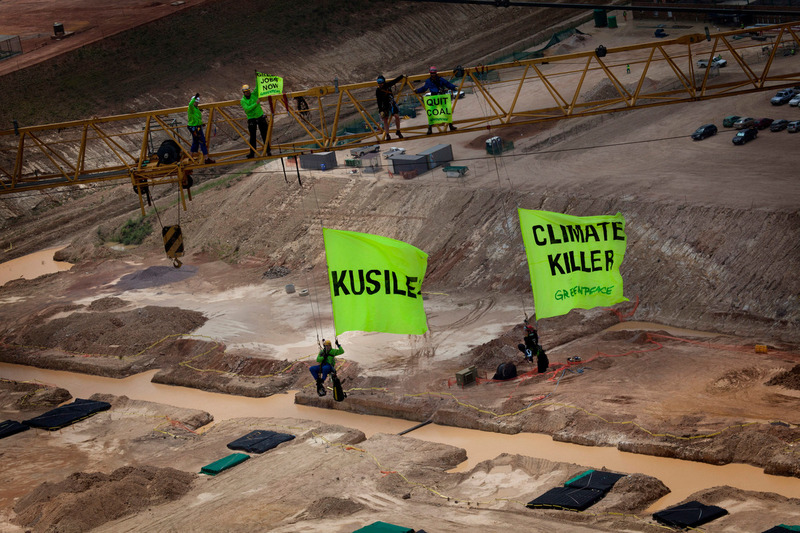
In the majority of African nations, the demand for energy is often higher than the supply due to inadequate or outdated energy infrastructure and electricity storage systems. Consequently, countries opt to put decarbonisation projects on hold so they can use the available resources to meet immediate energy demands. However, too much fossil fuel dependence leaves vast renewable energy resources in Africa untapped and fails to address energy poverty.
Take South Africa, for instance. The country is currently in the middle of a coal-inspired energy crisis due to its overreliance on this resource. While the nation has immense renewable energy potential, its coal-powered plants continue to generate electricity for the massive population.
However, the energy infrastructure is too outdated and can only serve a portion of the population at a go, resulting in load shedding. Unfortunately, the South African government is not in a hurry to switch to a more renewable energy option, so the country’s emissions keep rising, and energy poverty remains unsolved.
Solution
To reduce fossil fuel dependence, green energy investment is critical. Governments should liaise with private investors and international financial institutions to acquire the necessary funding so they can invest in technologies that fast-track the transition to clean energy.
- Political obstacles and regulatory restrictions hinder decarbonisation.

Numerous political issues stall Africa’s decarbonisation efforts. One such issue is political instability, which makes attracting long-term investors difficult. Countries experiencing political instability also tend to have regulatory challenges, such as inconsistent policies due to frequent policy changes or reversals by the government. This, too, does little to build investor confidence and initiate decarbonisation projects.
Political and regulatory obstacles are often accompanied by corruption, a rampant issue in many African states that limits the successful execution of decarbonisation projects. For example, South Africa’s power company – Eskom – has been plagued with corruption for years now, with each scandal taking the country further away from a clean energy transition. Reports and exposes have revealed as much and showcased how corruption has caused the nation to miss opportunities for deploying renewable energy sources.
Solution
Overcoming political instability and regulatory restrictions requires formulating long-term policies and legislation to ensure that climate goals are not affected by changes in the political scene. It is also important for governments to create strict anti-corruption measures to eliminate corruption and maintain transparency as decarbonisation projects progress.
- Directing all efforts towards adaptation as opposed to mitigation slows down decarbonisation projects.
Africa’s vulnerability to climate change has increased over the years, exemplified by the extreme weather events that have plagued the continent in recent months.
In theory, the continent has enough resources to fight climate change and its impacts. However, many of these resources remain unexplored.
The few that have been exploited are channelled towards adapting to climate change impacts like food insecurity, floods, and drought, which have recently become rampant, leaving these nations with no other means to support their decarbonisation initiatives.
Solution
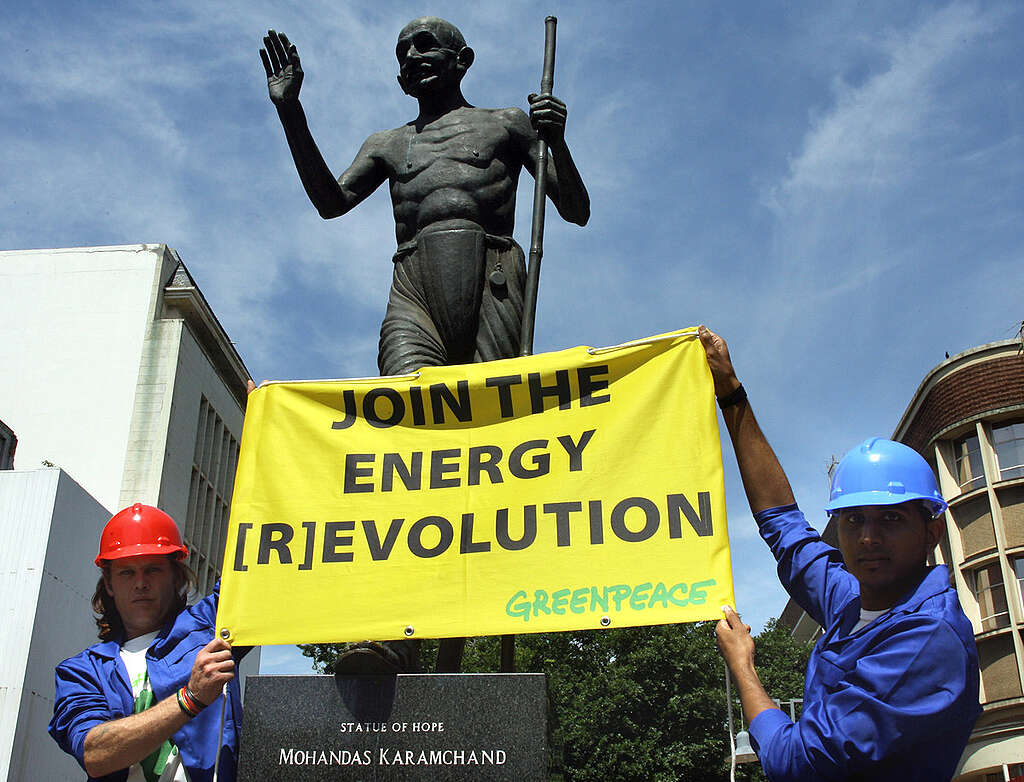
Image ID: GP01WU8
Countries across Africa need to shift their attention to mitigation strategies to drive long-term changes and end the climate crisis. This can be achieved by leveraging available funds and resources and seeking assistance where necessary to effectively decarbonise economies.
Make a difference.
Successfully driving change requires input from everyone the change may affect. Therefore, your input with respect to decarbonisation is priceless. Here are some Greenpeace initiatives you can support to inspire the movement:
- The continued dependence on fossil fuels is proof of the indifference of African governments and fossil fuel-driven corporations. Join us in resisting climate change and demanding climate action from African governments.
- Demand the protection of the Congo Basin Rainforest, Africa’s largest carbon sink.
- Support South Africans in demanding an end to load shedding and a transition to clean energy.

